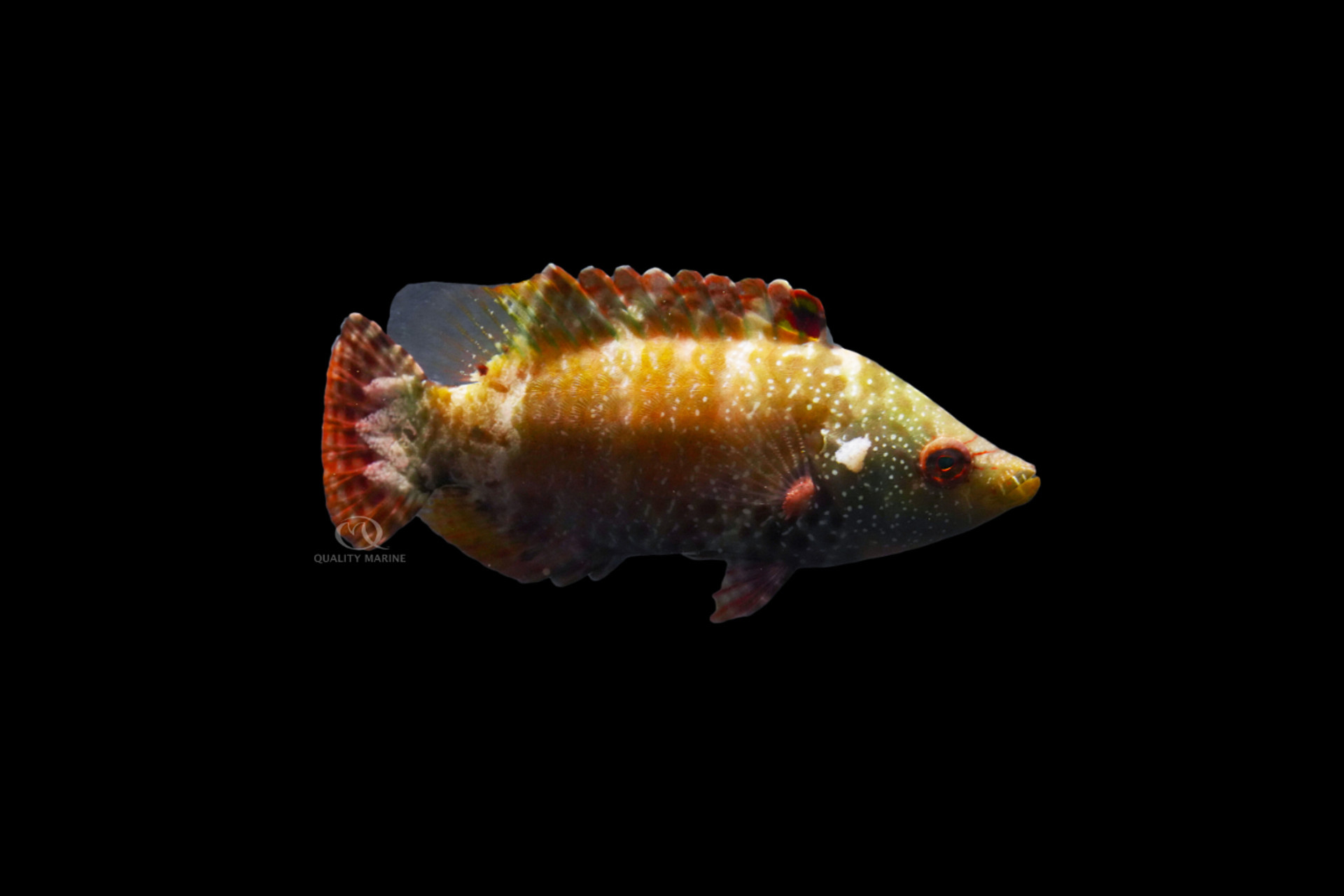Highly Underrated Fish - The Long Jaw Wrasse

The Long Jaw Wrasse has many common names, including Point (and pointed) Head Wrasse, Plain Face Wrasse, Snob Wrasse and our team favorite, the Snooty Wrasse. There is some debate as to its scientific nomenclature, as it is currently listed as a Epibulus genus fish, which would make it a close relative of the Sling Jaw Wrasse, though many sources have it as a different color form of the Red Maori Wrasse which would make it Cheilinus oxycephalus. When there is official closure on this matter, we will update this article to reflect any changes.
Regardless of this species' final scientific description, this is a very interesting fish that makes an excellent showpiece for a community tank. They are low/no risk to corals of any type but are likely to consume other invertebrates like Tridacna clams, Fan Worms, possibly starfish and even some cleanup crew. The plus side of this consumptive behavior is that they are relentless predators of fire worms and bristle worms! This also makes them very easy to feed in captivity. They usually take thawed meaty foods like Gamma Food's Mysis, Krill, Chopped Prawn and Mussel without any fuss and getting them to accept a pellet food like the Nutramar Complete takes only a few feedings. Smaller specimens, up to a few inches long should be fed at least once a day, but full adults could be fed every other day. The only challenge in feeding them is that they like to stay close to a cave or hiding place, and so they need to get accustomed to a hobbyist at the tank's edge and that this signifies feeding time.
The upside of this secretive behavior is that the Long Jaw Wrasse doesn't need as big of an aquarium as many other fish that could get six inches long, which is about their maximum size, though they are much more commonly about five inches long at maturity. We suggest a tank of at least 75 gallons, and while larger is always better, even a full adult won't use much more that the space in a 125. Decor should be rock heavy, providing many hiding places for the wrasse. The more caves they have, the more comfortable they will feel, and the more often you will see them. Even when they are perfectly happy, they would still like to stay close to one of their hiding places.
Outside of spawning season, when they form distinct pairs, Long Jaw Wrasses are usually found by themselves. They live on or around tropical rock and coral reefs, usually in fairly shallow water (less than 120 feet deep or so.) As such, the high flow and light of our coral-centric tanks will not bother them. This being said, in the short run, dimming your lights slightly might help the acclimate quicker. They do best in pretty standard aquarium conditions: 75-78 degrees Fahrenheit, pH between 7.8 and 8.4, and a specific gravity of around 1.025. While not overly sensitive to nitrate, you should always keep it under control, and it will be better for the fish regardless of their vulnerability to it. As the Long Jaw likes big meaty meals, keeping nutrients in check will mean utilizing oversized filtration and regular water changes.
Long Jaws make great tankmates for everything they can't eat and can't eat them. We'd avoid keeping them with very small, slow swimmers like Dragonettes. Conversely, their mind-our-own business attitude means they can be bullied into hiding by large, overly aggressive fish too. We've seen no problems in keeping them with a wide variety of corals, but they will consume your cleanup crew over time, seemingly having a preference for hermit crabs. They are high risk with clams and other bivalves, and we suggest a separate tank for them if you plan on keeping decorative clams. Snails and hermits have short life spans in the wild, and it is probably better to have them slowly hunted out, rather than dying, then decomposing, hidden in your display somewhere when they die. Long story short, plan on replacing your cleanup crew on a schedule if you keep this (or frankly most larger wrasses). These fish also do well in displays heavy to decorative algae as this provides both a great amount of cover, and an excellent hunting ground for inverts.
If you are the type of aquarist who wants some fish in their marine display that aren't run of the mill species, this is an excellent, hardy and adaptable choice. They have extremely varied coloration and interesting swimming behaviors. They get fairly big, but overwhelmingly so. This, combined with their close ranging swimming behavior means they are especially attractive as showpiece fish for displays that might be too small for other larger sized, striking fish. If all this sounds interesting to you, head to your LFS and ask them about sustainably sourced Long Jaw Wrasses from Quality Marine today!